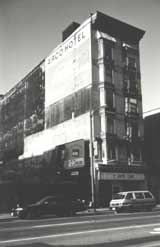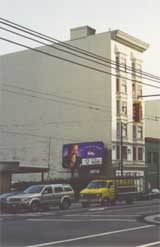Gentrification is defined by David Ley (1996) as "a process of social change where by a social transition occurs as lower-income groups are progressively replaced in inner-city neighborhoods by middle-income groups who reinvest and revitalize the inner-city." It is a process that is steeped in political and ethical strife. On one side, it is represented as "an unjustified invasion of viable working class neighborhoods" and "as class warfare - the extermination and erasure of the marginalised (Smith 1996, Blomley 1997). On the other, it is represented as a "critical urban movement engaged in an emancipatory project" of urban renewal (Caulfield 1989 in Blomley 1997).
 In academic literature on the subject, there have been four general explanations of gentrification: demographic change, housing market dynamics, urban amenity dynamics and changes in economic base (Ley 1986). Each of these four basic explanations will be examined in detail in the five measures discussed below (Sections 5 to 9). However, there are a few issues that do not relate directly to these measures, but are still important in understanding both the processes of gentrification's and an ability to detect and measure gentrification, and will therefore be discussed here.
In academic literature on the subject, there have been four general explanations of gentrification: demographic change, housing market dynamics, urban amenity dynamics and changes in economic base (Ley 1986). Each of these four basic explanations will be examined in detail in the five measures discussed below (Sections 5 to 9). However, there are a few issues that do not relate directly to these measures, but are still important in understanding both the processes of gentrification's and an ability to detect and measure gentrification, and will therefore be discussed here.Some researchers use stage models to help explain the dynamics of gentrification,1 suggesting that neighborhoods go through definable stages as they gentrify. Different authors use different measures to define these stages ; however, all differentiate between the perceived gentrifiers, and their ascribed characteristics based on the time, or stage, in which they move into these neighborhoods (Kerstein 1990).

Broadly, these gentrifiers are classified as first and second wavers. First wavers are characterized as pioneer gentrifiers, conjuring up images of a vacant frontier, which these pioneers settle2. They are generally represented as young, academic and eclectic. They essentially 'settle' the rougher neighborhoods, making them more attractive to the second wave or mature gentifiers. It is the second wave gentrifiers that are represented to have the more devastating effect on the community. Where as first wavers are represented to live within the community, second waver are represented to displace the community. (Blomley 1997, Lees 1996, Ley 1996). Lees (1996) points out the binary characterizations of the two groups. Where as first wavers are characterized as thrfty, hippie, socialist, spiritual and alternative; second wavers are characterized as excessive, yuppie, New Leftist, secular and mainstream. Kerstein (1990) further differentiates between the two groups, characterizing first wavers as risk-oblivious, willing to "chance their investment and perhaps personal safety," and second wavers as risk-adverse, moving in only after the neighborhood has been "substantially rehabilitated" by the first wavers. It is important to keep these characterizations in mind when the measures below are defined as either casual or consequential measures of gentrification. Generally (though not precisely), causal measures of gentrification are concerned with processes related to first wave gentrifiers, while consequential measures are attempting to detect second wave gentrifiers in an area.
1 Some emphasize the role of public and private institutions, some emphasize the neighborhood change as a function of "filtering", others emphasize the role of displacement (Kerstein 1990)
2 Ignoring and marginalizng the incumbent population of the area (Blomley 1997).